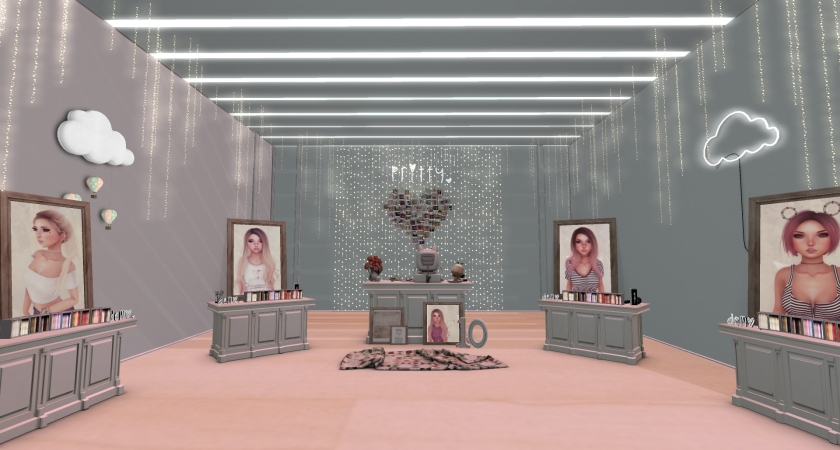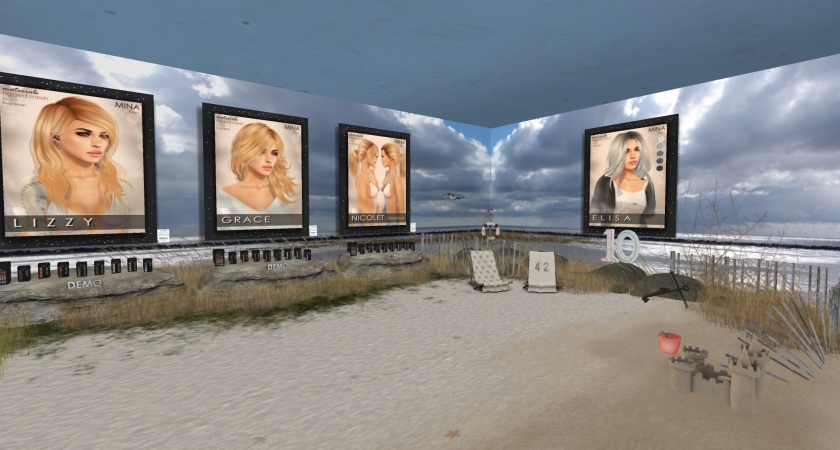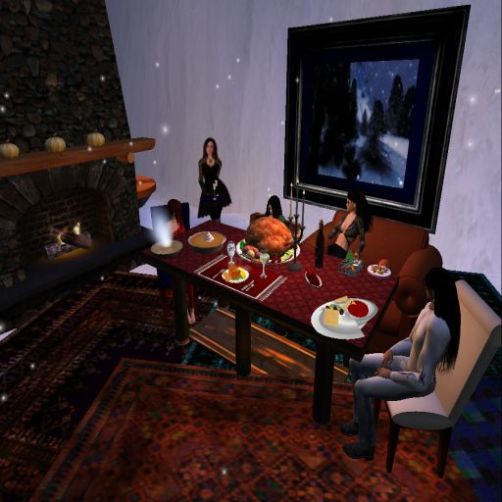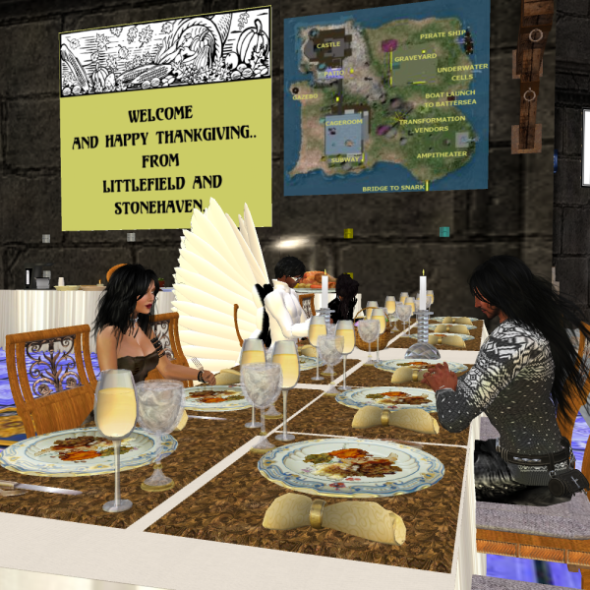 I struggle a lot with Christmas.
I struggle a lot with Christmas.
Wait, let me rephrase that. Truthfully, I don’t struggle with Christmas at all. What I struggle with is fitting in during the holiday season.
Nearly everyone else observes Christmas in a completely different way from me. I have reasons for following a different path, but it’s very difficult to hold true to myself without offending the people around me. They tend to think that because I don’t do things their way, I must be criticizing them. I’m not, but their attitudes toward my customs range from indignation to puzzlement. Well, let me try to clear it up.
Up until about 25 years ago, Christmas had a very unpleasant stranglehold on me. Then one year, I finally broke free. At the time, my loved ones thought I’d lost my mind. I hadn’t, but I knew I would lose my mind for sure if I didn’t change my ways.
You see, my family, when I was growing up, was enslaved by a holiday defined by quantity and a drive to impress others with perfect decorations, food, presents and parties. My mother actually counted the number of gifts under our tree as a way of “rating” the quality of that year’s holiday. And it wasn’t only about gifts; to qualify for a “good” Christmas, our house had to be decorated better than any other house, inside and out, and we had to give “the” party of the season with the most impressive gourmet food and drinks. And of course we had to put on a good show, exhibiting “holiday cheer”—whether we felt it, or not.
From the outside it looked great; with decorations, parties and gifts my mother certainly knew how to “impress with excess.” But in the frantic rush to do everything, perform perfectly and be artificially happy, everyone got far too stressed, and made each other thoroughly miserable.
When I became a young adult, not knowing any better I began to duplicate that craziness. I, too, made myself crazy trying to give outrageous gifts and do everything perfectly for the holiday. I didn’t have financial resources like my parents so I tended to spend a lot more money than I should have. As things in my life started going sideways, the stress of trying to be perfect, and exhibit holiday cheer when I felt none became a bigger and bigger burden. Finally, in one particularly depressed year, I couldn’t face it, and I said: no more.
I knew that I had to change. I just wasn’t sure how to do it. My head was swimming, trying to grasp the difference between trying to impress someone, and trying to please them. My mother’s methods had always seemed a little aggressive to me, as if gift-giving were a contest that she was trying to win. It seemed less about pleasing the recipient and more about showing off how much money she had. I knew that was not the way I wanted to keep Christmas. I had to replace that competitive attitude with something more meaningful. I just didn’t know what that was.
The only thing I could think of was to start totally fresh, with a blank slate.
I declared a moratorium. I announced that I would accept no gifts, nor would I be giving any. That year I did not decorate, or prepare any special treats. I had no Christmas tree, did no shopping, and listened to no Christmas music. I rejected all offers of Christmas dinners, parties and other gatherings. It was a truly minimalist Christmas.
 My only acknowledgement of that season was going to church on Christmas Eve, alone, in a small church nearby. I didn’t speak to anyone after the midnight service. I slipped out the back, and set out alone to walk the few blocks home. I remember feeling so light, and peaceful. It was a beautiful night, crisp and clear; it needed no artificial decorations to make it beautiful. The sky was deep black, studded with diamond stars, stretching to eternity, more stunning than any Christmas tree. It was still, and quiet. Quiet enough, finally, for me to hear what I needed to hear, without the noise of all that pointless activity. In that silence I felt like an enormous weight had been lifted and I breathed freely of the cold night air, feeling at peace for the first time in a long time.
My only acknowledgement of that season was going to church on Christmas Eve, alone, in a small church nearby. I didn’t speak to anyone after the midnight service. I slipped out the back, and set out alone to walk the few blocks home. I remember feeling so light, and peaceful. It was a beautiful night, crisp and clear; it needed no artificial decorations to make it beautiful. The sky was deep black, studded with diamond stars, stretching to eternity, more stunning than any Christmas tree. It was still, and quiet. Quiet enough, finally, for me to hear what I needed to hear, without the noise of all that pointless activity. In that silence I felt like an enormous weight had been lifted and I breathed freely of the cold night air, feeling at peace for the first time in a long time.
Wrapped in that crisp, bright darkness, gazing up at the infinite night sky, I suddenly comprehended what it meant for eternity to enter into time. In one blazing flash of insight, I realized that Christmas is about one thing. To immerse myself in that one thing is all that I need. Anything that flows from and serves that one thing is good. Everything else is a distraction.
And at that moment, I realized that I was free.
Since that cold dark night 25 years ago I have settled into my own lovely, small Christmas celebration. Others are welcome to do as they wish, but I know what works for me. I ignore most elements of commercial and secular Christmas, not because there is anything wrong with them, but because I find them irrelevant. I have come to understand what is important for me, and I focus on those things.
Gift giving, for me, now, is not a way to impress, but a way to honor the gift that originated this holiday. I exchange modest gifts with a handful of loved ones, as I am able, not out of any sense of obligation, but because I enjoy pleasing them. My loved ones mostly feel the same, and I am always genuinely pleased by them, too.
I do not decorate. I have no use for Santa, elves, reindeer, or anything else commercial. I don’t object to them, but they are meaningless to me, and certainly not worth expending any money, time, attention or effort. For me, they have nothing to do with the one thing that gives Christmas meaning.
I keep a few quiet traditions that are deeply meaningful to me, but they are private, and ancient, and intimate, and since most people would not understand them, I tend to keep them to myself. I don’t need anyone else to understand them, and I feel no need to convert anyone else to my way of observing the holiday. I do what I do because it’s right for me.
People with families have different priorities, of course, but I feel no pressure to participate in holiday gatherings just because it is Christmas. I treasure time with my loved ones all year long, but I am perfectly comfortable with solitude. In fact, my most intimate Christmas ritual is spent alone, at home, on Christmas Eve morning, listening to a famous radio broadcast. I say alone, but I am not alone. I join an invisible audience of 200 million people who, like me, are in front of radios and computers all over the world, listening to the same broadcast at the same time. Even though I can’t see them, I know we are all attuned to the same thing. I immerse myself in the beauty of that one thing, and I wait to bow my head humbly, honoring that moment when the eternal and the now became one.
That is my Christmas.
I don’t expect anyone to understand it, and certainly don’t expect anyone to change how they celebrate the holiday. Others will find meaning in other ways. But hopefully they will understand that I am not judging or criticizing. I am simply honoring what is meaningful to me.
As the commercial holiday season gets underway, I wish everyone happiness, and joy, and peace.





































 I struggle a lot with Christmas.
I struggle a lot with Christmas. My only acknowledgement of that season was going to church on Christmas Eve, alone, in a small church nearby. I didn’t speak to anyone after the midnight service. I slipped out the back, and set out alone to walk the few blocks home. I remember feeling so light, and peaceful. It was a beautiful night, crisp and clear; it needed no artificial decorations to make it beautiful. The sky was deep black, studded with diamond stars, stretching to eternity, more stunning than any Christmas tree. It was still, and quiet. Quiet enough, finally, for me to hear what I needed to hear, without the noise of all that pointless activity. In that silence I felt like an enormous weight had been lifted and I breathed freely of the cold night air, feeling at peace for the first time in a long time.
My only acknowledgement of that season was going to church on Christmas Eve, alone, in a small church nearby. I didn’t speak to anyone after the midnight service. I slipped out the back, and set out alone to walk the few blocks home. I remember feeling so light, and peaceful. It was a beautiful night, crisp and clear; it needed no artificial decorations to make it beautiful. The sky was deep black, studded with diamond stars, stretching to eternity, more stunning than any Christmas tree. It was still, and quiet. Quiet enough, finally, for me to hear what I needed to hear, without the noise of all that pointless activity. In that silence I felt like an enormous weight had been lifted and I breathed freely of the cold night air, feeling at peace for the first time in a long time.


















